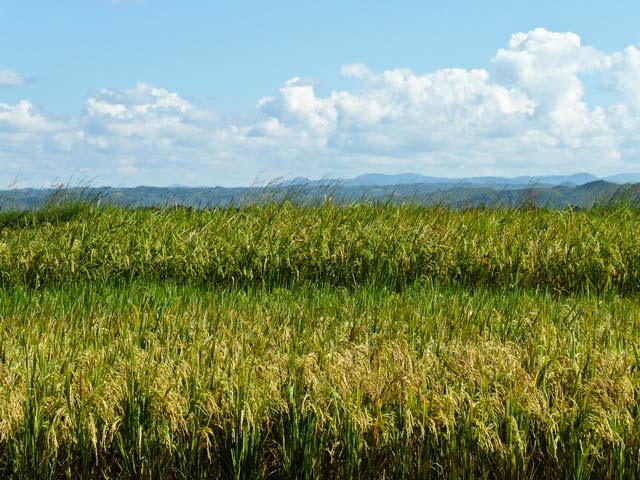Mixed variety
 What it does
What it does
When fields have mixed variety, rice plants have different maturity periods. There are also differences in grain filling and moisture at the time of harvest.
Why and where it occurs
The problem arises primarily as most farmers in Asia keep their own seed and do not tend to do any seed processing to ensure varietal purity or seed quality. The increase in direct seeding can also be a factor as the number of volunteer plants (i.e., those germinating from fallen seed) increase with continuous cropping and direct seeding.
How to identify
Compare plants.
Plants (off types) in field have different height, maturity, color and/or other characteristics (e.g., grain characteristics). The pattern of off types tends to be reasonably uniformly spread across the field, but may be patchy.
The symptoms are similar to the symptoms affected by replanting and early rat damage-causing differences in plant development. To confirm the cause of damage, check or ask the farmers about the seed source and quality.
Why is it important
Poor seed quality in general (including mixed varieties) is a major problem throughout Asia. Yields are reduced due to poor vigor, diseases, and weeds introduced in the seed.
How to manage
- Use good quality seeds (high viability, high germination rates, varietal purity and seed should be full i.e., high thousand grain weight for the variety and free of insects, diseases and weed seeds).
- Perform seed processing to ensure varietal purity or seed quality.
- Make sure that volunteer rice from previous crops is not allowed to develop.







